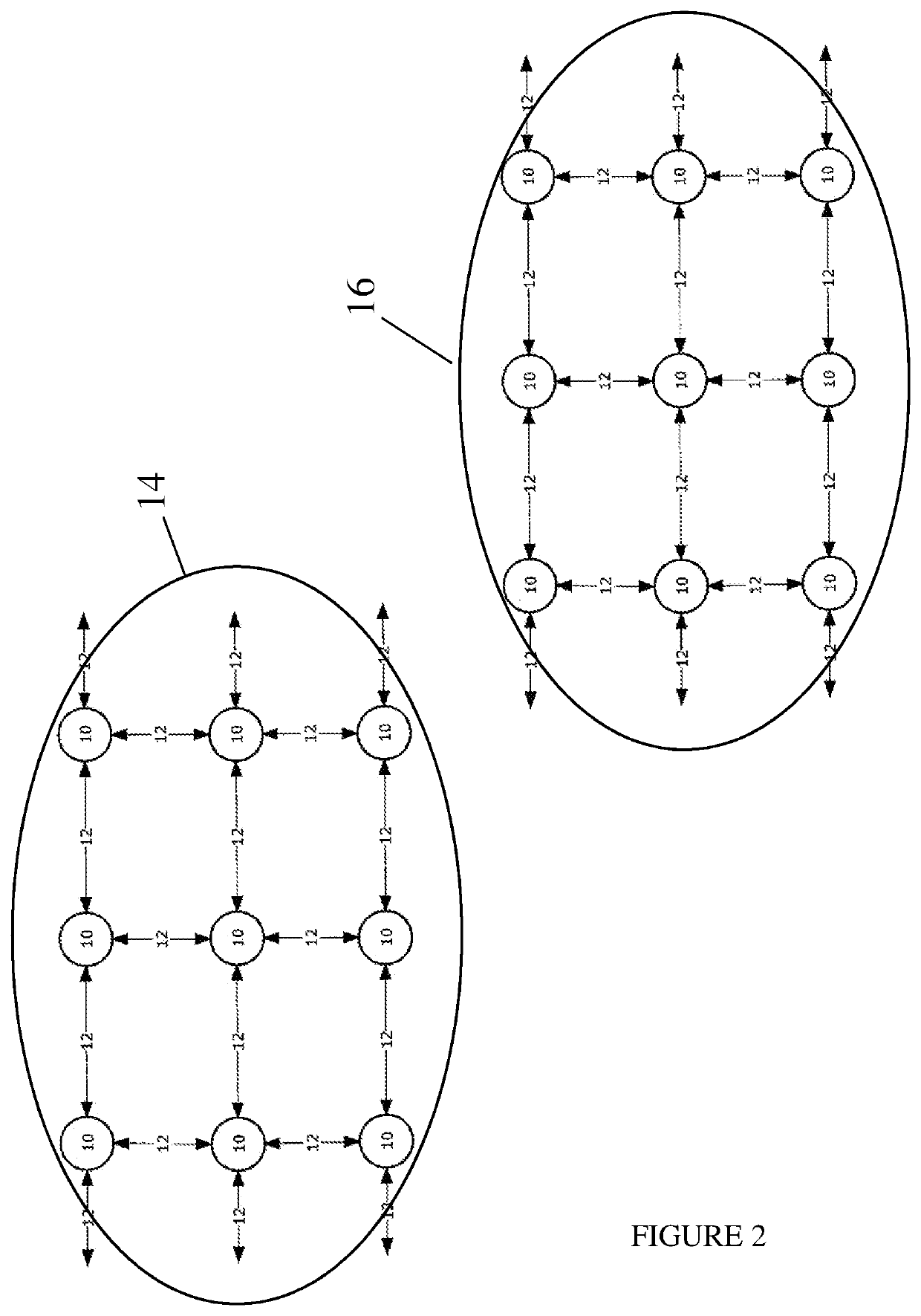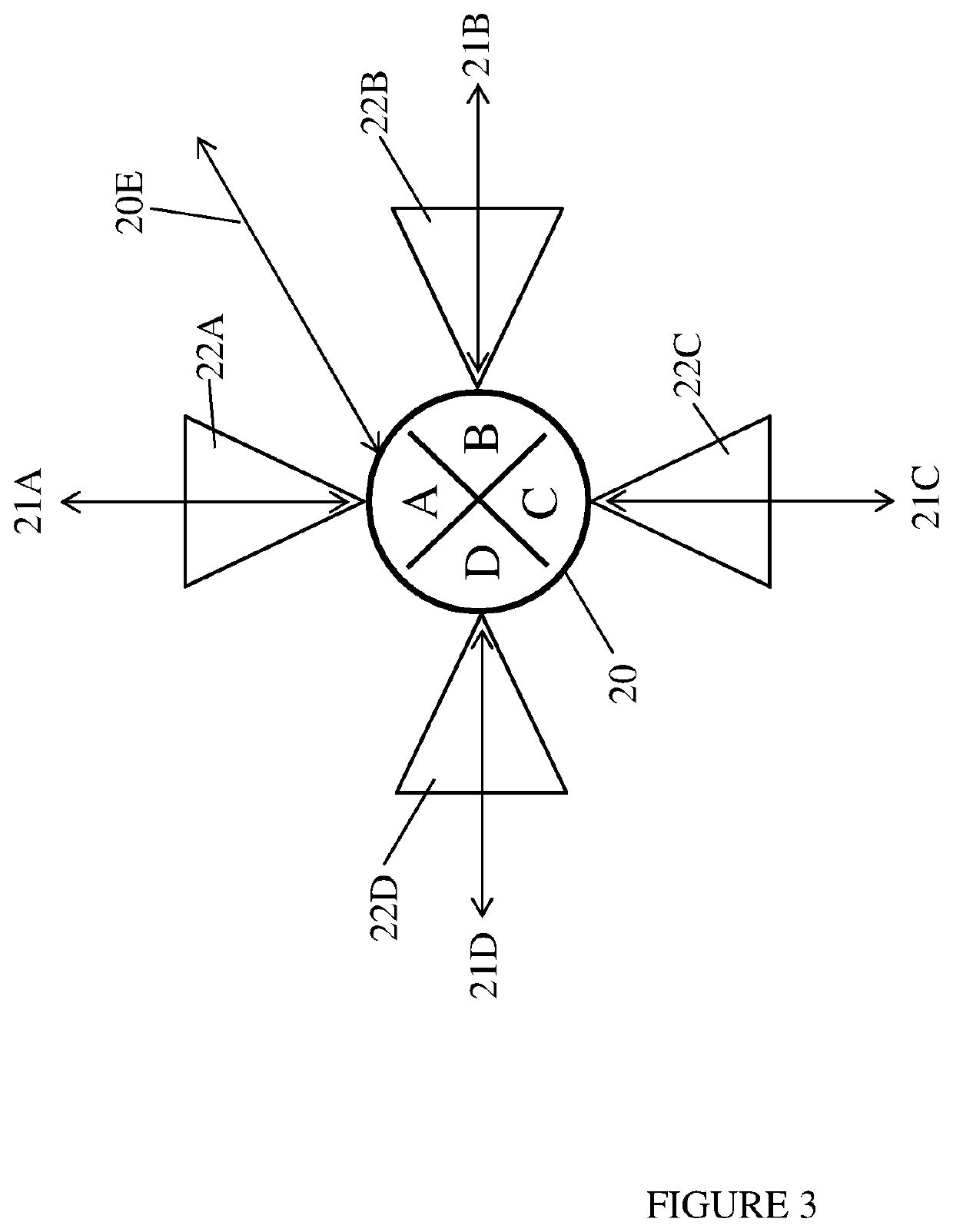Wireless communications networks
a technology of wireless communication and mesh communication, applied in the field of wireless mesh communications network, can solve the problems of today's data traffic requirements, techniques are subject to interference, and no longer able to meet data throughput rates
- Summary
- Abstract
- Description
- Claims
- Application Information
AI Technical Summary
Benefits of technology
Problems solved by technology
Method used
Image
Examples
Embodiment Construction
[0044]FIG. 1 illustrates an “ideal” grid-like mesh communications network in which the network node devices 10 are arranged in a regular, predictable grid. As such, organisation of the network node devices 10 is into a usable, optimal or near optimal communications topology. As mentioned above, FIG. 1 illustrates a simplified example wireless mesh communications network which comprises a plurality of network node devices 10 interconnected by bidirectional wireless communications links 12. The network node devices 10 operate to communicate with one another, for the transfer of communications data therebetween. This type of network is known as a “mesh” network and uses multiple connections between network node devices that defines a mesh of communications links 12. FIG. 2 illustrates a pair of adjacent mesh communications networks 14 and 16, each being in line with the mesh network of FIG. 1. FIG. 2 is intended to illustrate that different mesh networks may be adjacent one another.
[00...
PUM
 Login to View More
Login to View More Abstract
Description
Claims
Application Information
 Login to View More
Login to View More - R&D
- Intellectual Property
- Life Sciences
- Materials
- Tech Scout
- Unparalleled Data Quality
- Higher Quality Content
- 60% Fewer Hallucinations
Browse by: Latest US Patents, China's latest patents, Technical Efficacy Thesaurus, Application Domain, Technology Topic, Popular Technical Reports.
© 2025 PatSnap. All rights reserved.Legal|Privacy policy|Modern Slavery Act Transparency Statement|Sitemap|About US| Contact US: help@patsnap.com



